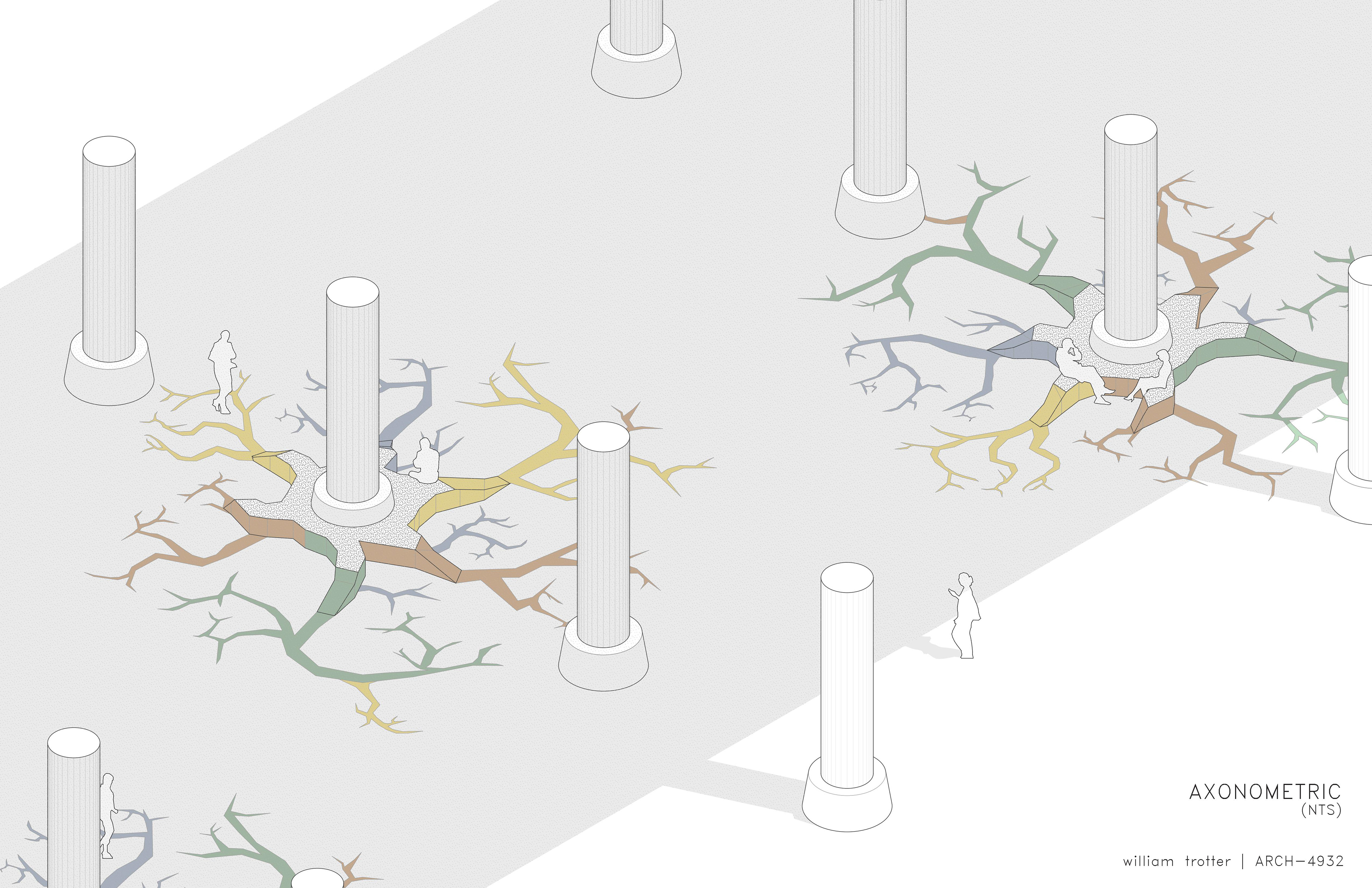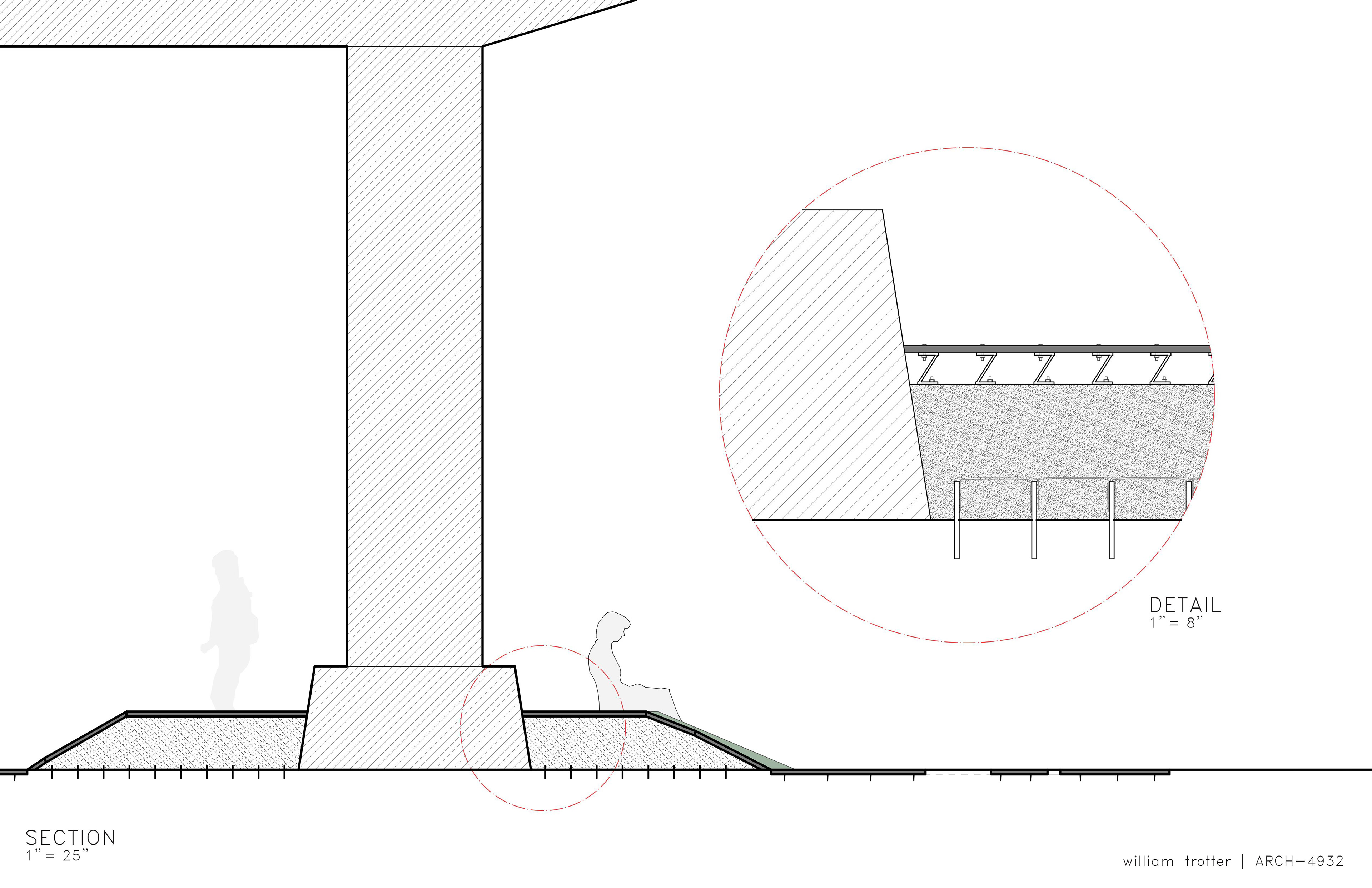Branches and Roots is the result of a Public Space and Monuments course that had students propose designs for intentional memorials and monuments in the New Orleans area. This project intends to re-envision part of what was lost as a means of narrating the history of Tremé and the 7th Ward districts’ upheaval during the Claiborne Expressway intervention of the 1960s. It seeks to memorialize the occupants of the more than 500 homes - and the likely even greater number of families - that were displaced for the highway. Last, it is important that the project contributes to the already interstitial and multifaceted role that the space under the highway now plays for the current and future generations of these neighborhoods.
The Claiborne expressway was an infrastructural renewal project that leveled an entire strip of homes and business, largely resting within the historically black Tremé and 7th ward neighborhoods. The newly constructed overpass came at the cost of removing the Claiborne Avenue median, which served as an essential means of socialization and gathering for these communities. Hundreds of soaring live oak trees were uprooted in this process, with the overpasses’ massive concrete pillars taking their place.
Despite the social and economic fracturing this development has brought upon this area today, the community has found ways to utilize this interstitial space for socialization, open markets, and various celebrations - from street parties to funeral processions.
project goals:
• utilize the existing overpass columns as nodes of rest and memorialization, enhancing them with stump- like seating elements that echo the live oaks that once paraded historic Claiborne
• embed crack-like roots into the ground that spread from these stumps, engraved with the names and stories of those who once lived where the highway now stands
• invite all people, whether familiar with the history or not, to learn more about what happened to these spaces and reflect on what was lost
• utilize the existing overpass columns as nodes of rest and memorialization, enhancing them with stump- like seating elements that echo the live oaks that once paraded historic Claiborne
• embed crack-like roots into the ground that spread from these stumps, engraved with the names and stories of those who once lived where the highway now stands
• invite all people, whether familiar with the history or not, to learn more about what happened to these spaces and reflect on what was lost




engagement:
• engraved names and stories allow those sitting to reflect upon the history through their surroundings
• subtle signage on the ground or columns may be utilized to highlight specific areas or aspects of the project, such as the reuse of concrete rubble
• labeled QR codes can be embedded into the top surface of the seats to link users to voice recordings, video narratives, and historic photos related to the destruction of the Claiborne corridor
• engraved names and stories allow those sitting to reflect upon the history through their surroundings
• subtle signage on the ground or columns may be utilized to highlight specific areas or aspects of the project, such as the reuse of concrete rubble
• labeled QR codes can be embedded into the top surface of the seats to link users to voice recordings, video narratives, and historic photos related to the destruction of the Claiborne corridor

